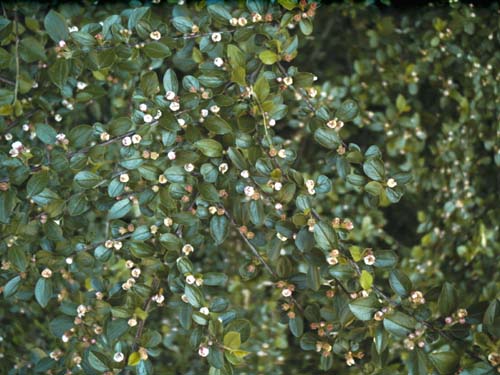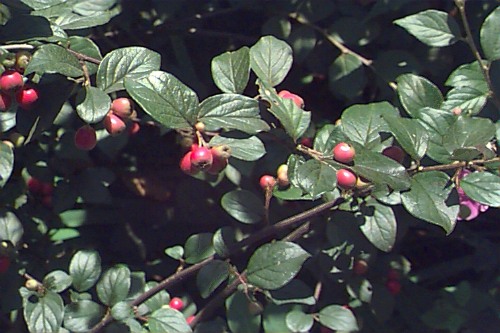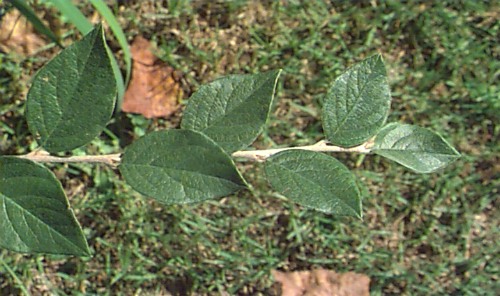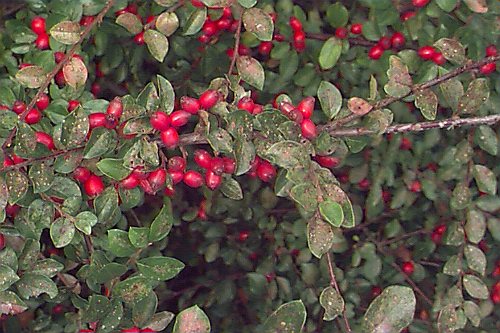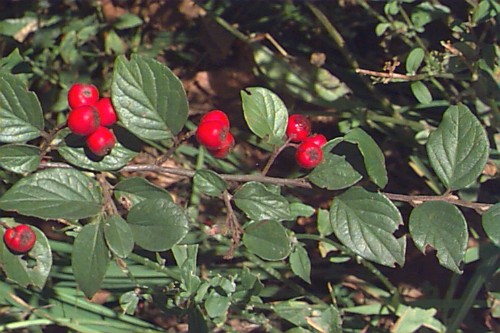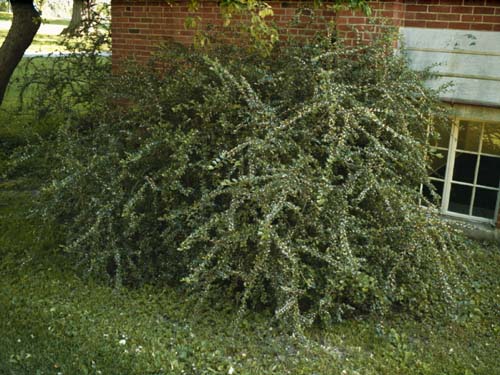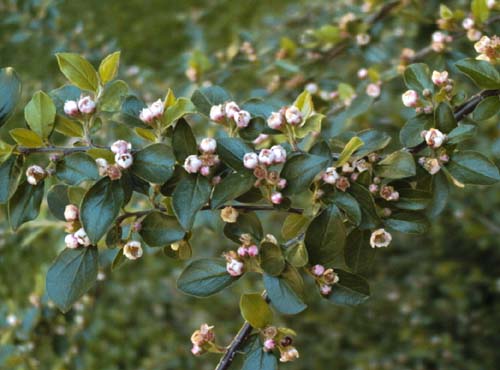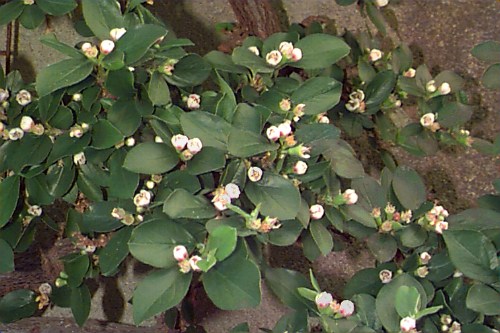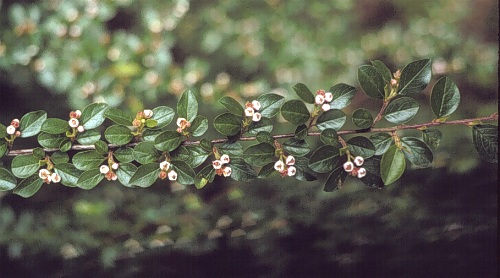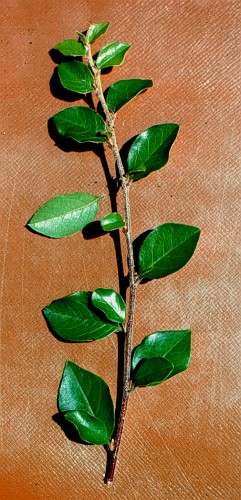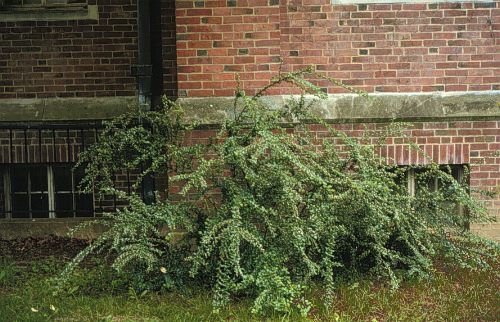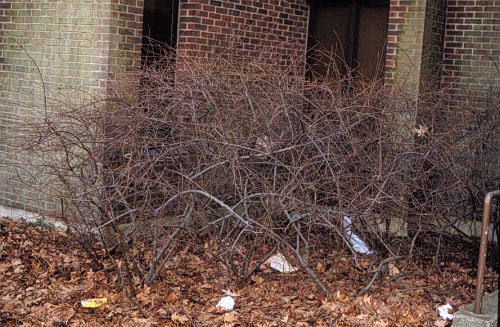Cotoneaster divaricatus
Spreading Cotoneaster
Rosaceae
ExpandHabitat
- native to western China
- hardy to zone 4
Habit and Form
- a deciduous, medium-sized shrub
- 5' to 6' tall
- width is equal to height, possibly greater
- multistemmed
- fine texture
- fast growth rate
Summer Foliage
- alternate leaf arrangement
- simple, deciduous leaves
- elliptic leaf shape
- upto 1" long
- slightly pubescent on underside
- dark green leaf color
Autumn Foliage
- yellow, red to purple fall color
- persist for a long time
Flowers
- small, rose colored flowers
- blooms early Spring
Fruit
- oval pome fruit
- red color
- 0.33" in diameter
- ripen in September through October
- can be showy
Bark
- slender, purplish-brown stems
- pubescent
- stems have a fishbone pattern
Culture
- transplant from containers only because of sparse root system
- prefers well-drained, loose soil
- wind tolerant
- pH adaptable
- full sun to partial shade
- prune tolerant
- salt tolerant
Landscape Use
- hedge
- bank cover
- groupings or mass
- espalier
- for flowers or fruit effect
- screen
Liabilities
- trouble free
ID Features
- rose flowers
- red, pome fruits
- irregular growth habit
- long spreading branches
- alternate leaves
- pubescence on underside of leaf
- pubescent stems
Propagation
- by seed, stratification required
- cuttings
Cultivars/Varieties
- none
